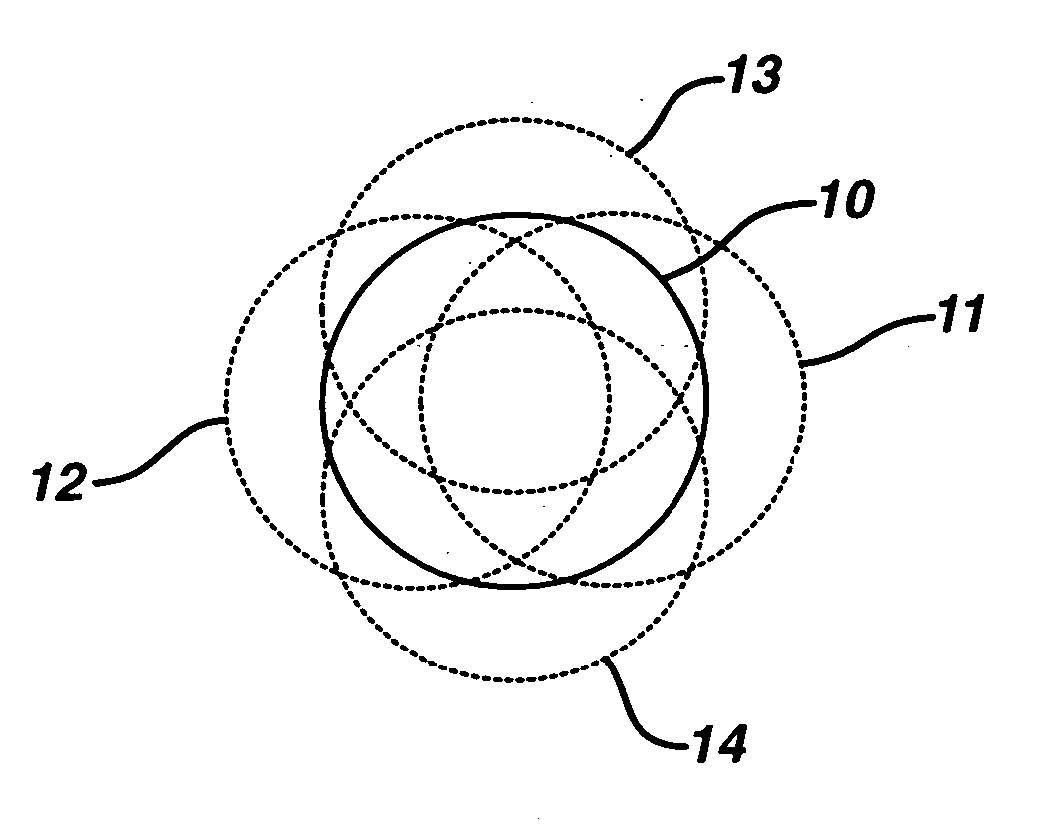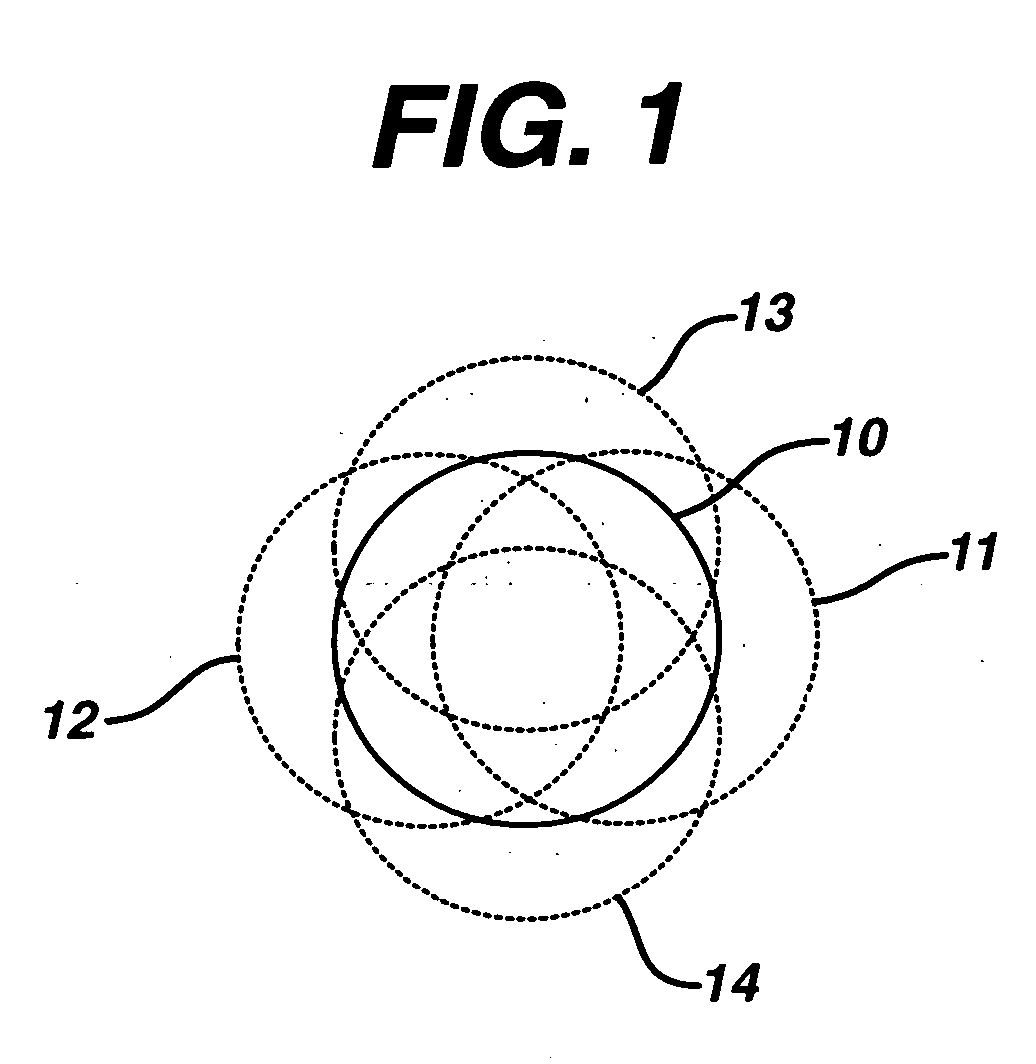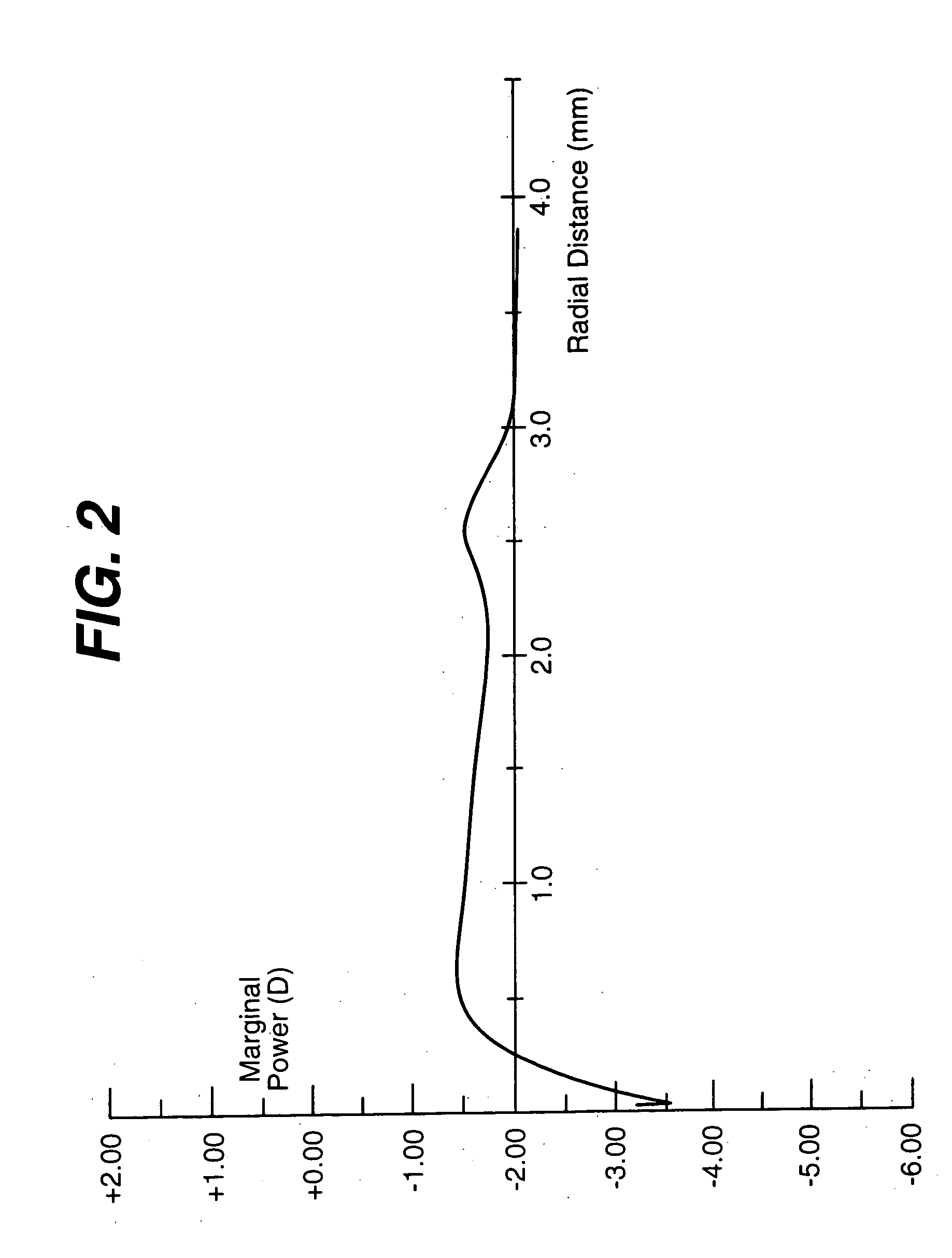Contact lenses and methods for their design
a technology of contact lenses and lenses, applied in the field of contact lenses, can solve problems such as suboptimal lens performan
- Summary
- Abstract
- Description
- Claims
- Application Information
AI Technical Summary
Benefits of technology
Problems solved by technology
Method used
Image
Examples
example
[0041] The performance of a lens designed according to the method of the invention and a lens designed using a paraxial optical design method in air were compared. The paraxial design, Lens A, was an ACUVUE® 2 BRAND etafilcon lens of −3.00 diopters. The Lens A design was wrapped onto a nominal cornea using Finite, Element Analysis (“FEA”) techniques. The lens shape resulting from the FEA was then loaded into the ZEMAX optical ray trace program.
[0042]FIGS. 3 and 4 are charts below comparing the 0 and 5 degree field RMS spot size at up to ±−0.5 diopters from the central design point of the wrapped Lens A design to a lens design of the invention, Lens B. Lens B is a −3.00 diopters etafilcon lens. The merit function used for Lens B was the RMS spot size at focus, with a ±5 degree field and a 0.5 mm decentration in ±X and ±Y directions. At these decentered conditions, the fields were optimized for RMS spot size at a 0 degree field and at ±5 degrees fields in X and Y. The total number of...
PUM
 Login to View More
Login to View More Abstract
Description
Claims
Application Information
 Login to View More
Login to View More - R&D
- Intellectual Property
- Life Sciences
- Materials
- Tech Scout
- Unparalleled Data Quality
- Higher Quality Content
- 60% Fewer Hallucinations
Browse by: Latest US Patents, China's latest patents, Technical Efficacy Thesaurus, Application Domain, Technology Topic, Popular Technical Reports.
© 2025 PatSnap. All rights reserved.Legal|Privacy policy|Modern Slavery Act Transparency Statement|Sitemap|About US| Contact US: help@patsnap.com



